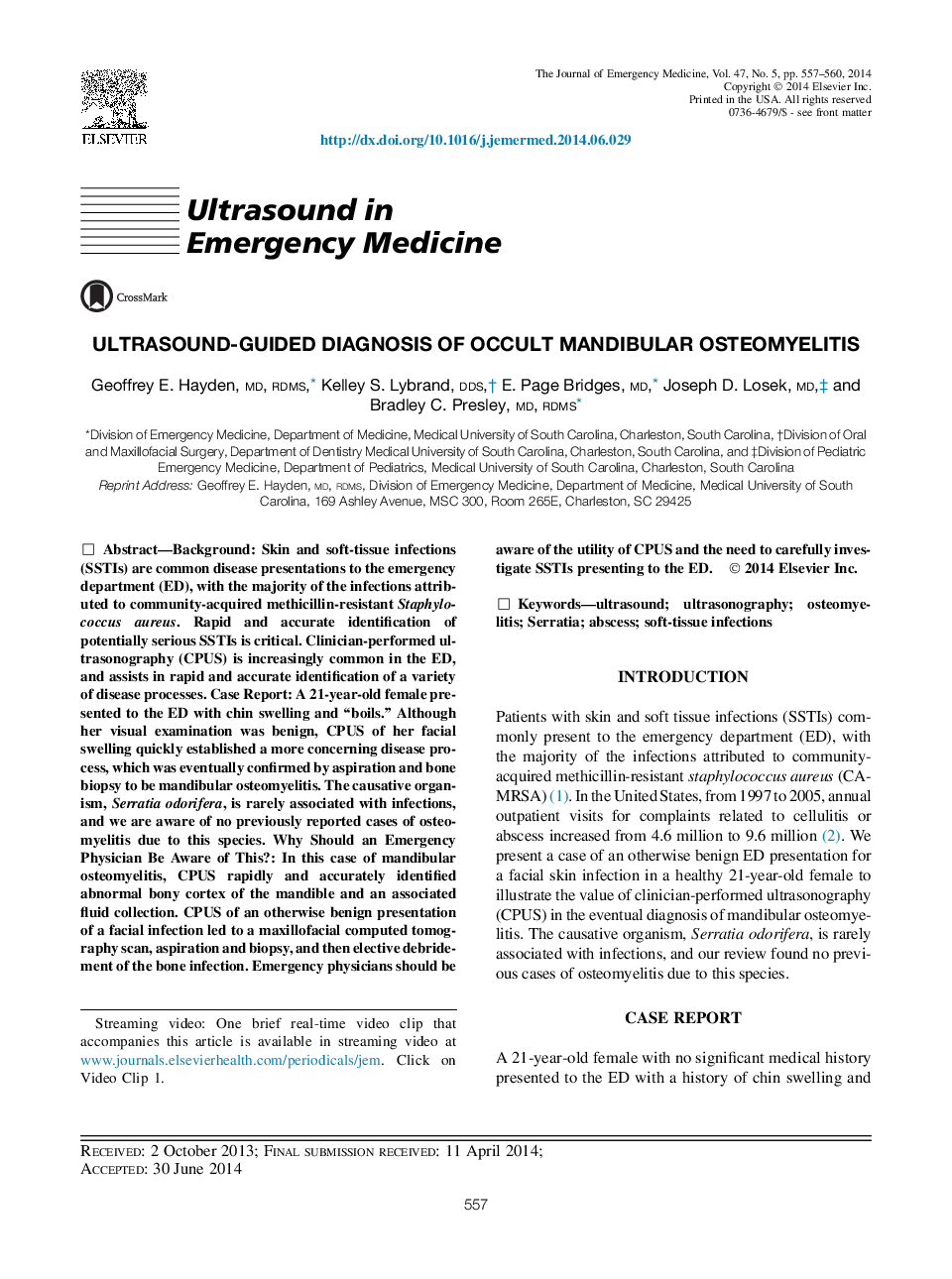| Article ID | Journal | Published Year | Pages | File Type |
|---|---|---|---|---|
| 3246996 | The Journal of Emergency Medicine | 2014 | 4 Pages |
BackgroundSkin and soft-tissue infections (SSTIs) are common disease presentations to the emergency department (ED), with the majority of the infections attributed to community-acquired methicillin-resistant Staphylococcus aureus. Rapid and accurate identification of potentially serious SSTIs is critical. Clinician-performed ultrasonography (CPUS) is increasingly common in the ED, and assists in rapid and accurate identification of a variety of disease processes.Case ReportA 21-year-old female presented to the ED with chin swelling and “boils.” Although her visual examination was benign, CPUS of her facial swelling quickly established a more concerning disease process, which was eventually confirmed by aspiration and bone biopsy to be mandibular osteomyelitis. The causative organism, Serratia odorifera, is rarely associated with infections, and we are aware of no previously reported cases of osteomyelitis due to this species.Why Should an Emergency Physician Be Aware of This?In this case of mandibular osteomyelitis, CPUS rapidly and accurately identified abnormal bony cortex of the mandible and an associated fluid collection. CPUS of an otherwise benign presentation of a facial infection led to a maxillofacial computed tomography scan, aspiration and biopsy, and then elective debridement of the bone infection. Emergency physicians should be aware of the utility of CPUS and the need to carefully investigate SSTIs presenting to the ED.
